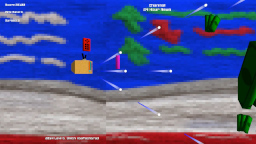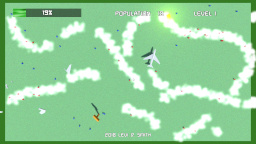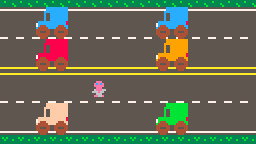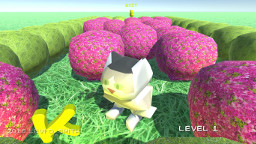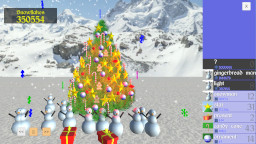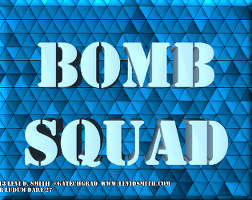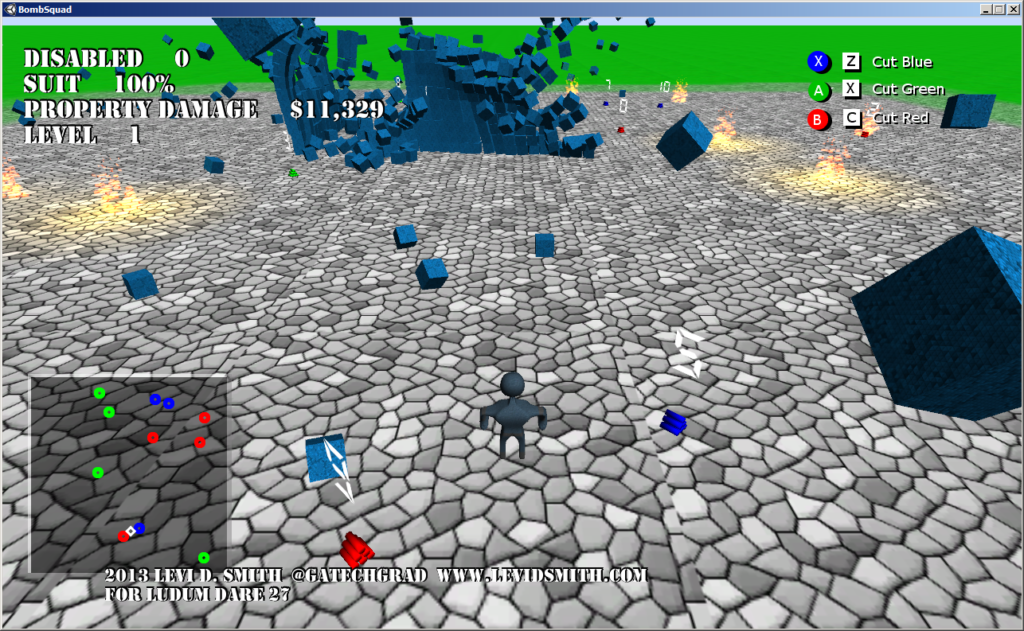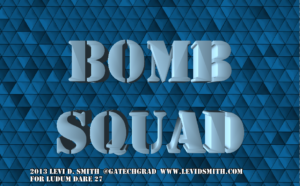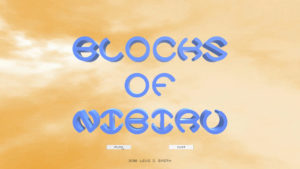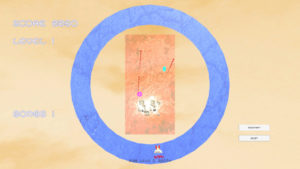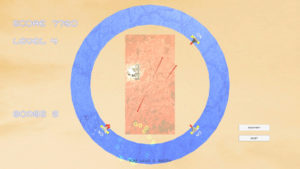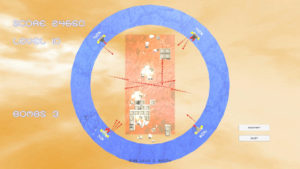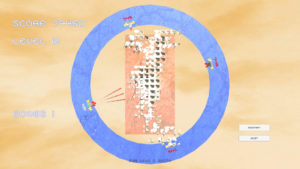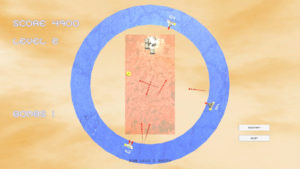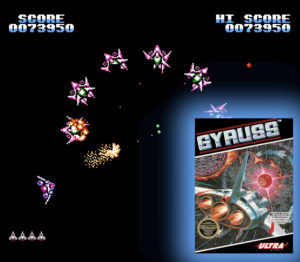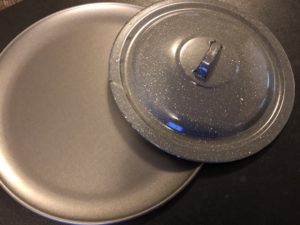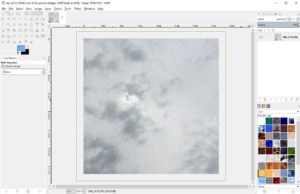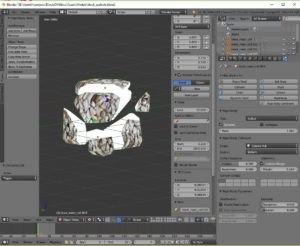With the first day of Ludum Dare 27 almost complete, I have made a good start on my entry Bomb Squad. The objective is to disable as many bombs as possible before they explode. When a bomb appears, you have 10 seconds to disable it.
I originally planned to have the player enter a sequence of wires to cut to disable the bomb. Implementing this wouldn’t be too difficult, but the problem would be displaying the wires to cut to the player. I would rather not have to display a sequence of buttons over the bomb, but trying to display small wires on a bomb would make it too hard for the player to see the sequence. I thought about having a popup view display whenever the player gets close to the bomb, which would show the sequence. However, I decided for now just to color the entire bomb with just one color that needs to be disabled. I think this is a good design decision, since 10 seconds is not a lot of time to run over to the bomb and disable it, especially with multiple bombs active at the same time.
The controls are simple, with the control stick and arrow keys moving the player. Once the player gets close to a bomb, the countdown number will turn green, indicating that it is the bomb that the player is trying to diffuse. If the player enters the correct color, then the bomb is diffused. The mapping between colors and the game pad buttons and keyboard keys are displayed in the upper right corner of the screen. If the player selects the wrong color, then the bomb will explode and the player’s suit will take damage. If the countdown reaches zero, the player will also take damage if they are near the bomb.
The amount of damage the player will take is dependent upon how close they are to the exploding bomb. If the player is directly on top of the bomb, then their suit will take 20% damage. The player takes 2% less damage for each world unit they are away from the explosion. The player will also be thrown backwards from the explosion, using Unity’s create explosion force method.
Last night, I created three tracks using Garage Band on my Mac system. In my opinion, it’s a little more difficult to use than Pxtone Collage, but it has better instrument samples. However, most of the instruments sound like John Tesh new age music. I also recorded some voice samples, which announces the title, game over, and level complete. Using Bxfr, I created sounds for the bomb exploding and a beep for disabling the bomb. I’ve always had problems getting 3D sound working, but I was able to get it to sound right by changing the volume rolloff in Unity from logarithmic to linear. Now explosions on the left will come out of the left speaker, explosions on the right will come out of the right speaker, and the volume will correspond to how far away the player is from the explosion.
So what’s left? The terrain textures are really blurry, so I really need to fix those. I haven’t had this problem in the past, so I think it must be due to using as 1024×1024 texture size. I will try recreating it will a 256×256 texture. I tried changing the tiling options for the texture, but it didn’t help. I would also like the touch up the player model, since I think the arms are too long and the hands are too big. There also needs to be more contrast in the suit, since it’s hard to tell the difference between the dark blue and gray. Also, the model needs to be scaled down in Blender to about half the size, since I have to scale it down in Unity. However, I learned that any mesh or scaling changes in Blender can really mess up the model, especially if it has already been rigged, animated, and texture mapped.
I would also like to add various “junk” around the play area (like cars, signs, and trees), which can also be damaged by the bombs when they explode. There will be a dollar value attached to each item, and after each level the player will get a total property damage value. The objective will be to keep the property damage value low. However, the physics engine started acting strange when I added a few test objects, by throwing the player up in the air when the player collided with an item. Overall, the player model seems to be stiff as well when it is affected by an explosion, probably because I’m just using a simple box collider for the player. Finally, I need to update the explosions, since I am just using a default Unity particle system right now. I would also like smoke to appear after the bomb has exploded, which could make it harder for the player to see the game area, which would give extra incentive to not let bombs explode.
One other problem is still passing data between scenes in Unity. This is a problem that I’ve always had with Unity, and have solved it before by passing the persistent data to the DontDestroyOnLoad method. However, it is not possible to associate that object with the newly created objects when a level is loaded. I’ve heard that it is possible to pass data between scenes using a player preferences object, so that may be the route that I take to solve the problem. This will be essential to pass the game score data to the level complete scene, as well as incrementing the level number after a level is complete.

